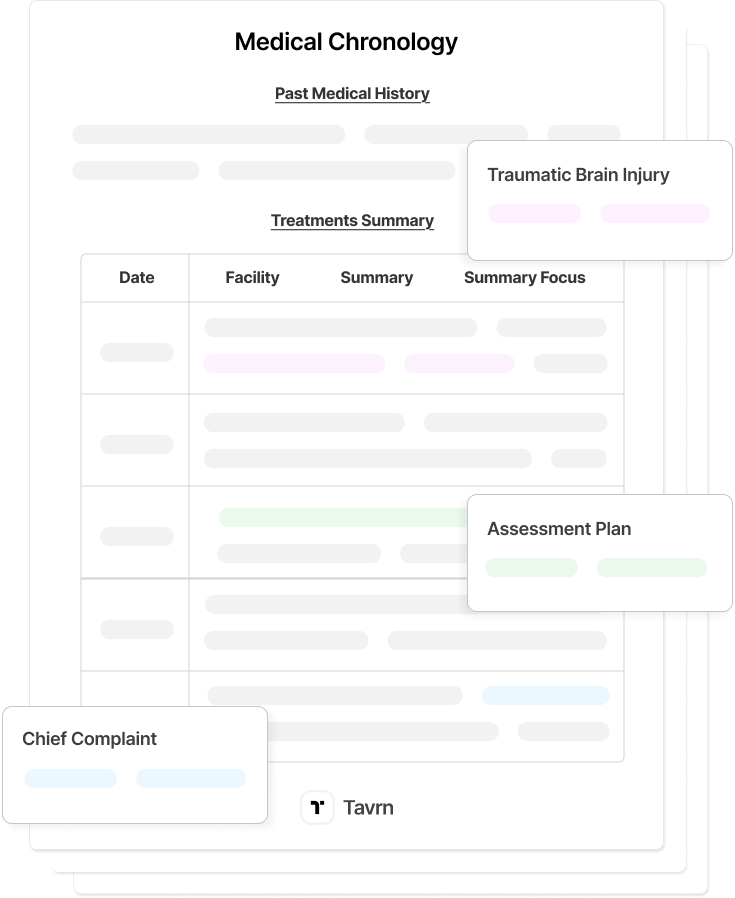Lawyers are experimenting with LLMs (Large Language Models) like Claude and ChatGPT, but improper use can lead to inaccurate citations, biased reasoning, and compliance failures.
Compliance is the foundation of AI use in law. Courts have already sanctioned lawyers for submitting AI-fabricated cases, and state bars caution against sharing client data with unsecured systems.
This guide explains how to prompt within legal boundaries. It clarifies the rules and regulations governing LLM use, introduces the LEGAL prompting framework, and provides 15 example prompts that lawyers can run in general AI tools.
What is AI Prompting for Lawyers?
Legal AI prompting is the practice of crafting written instructions that guide LLMs to generate accurate, professional outputs for legal tasks.
Unlike casual use of tools like ChatGPT or Gemini, legal prompting requires deliberate structure. Lawyers must ensure prompts are framed with the necessary context, professional standards, and ethical safeguards.
LLMs are accessible and powerful, but they are not purpose-built legal AI platforms. Compliance obligations fall squarely on the lawyer.
AI Compliance Factors for Law
The American Bar Association made the AI Model Rules clear in Formal Opinion 512. Courts and state bars emphasize that competence, communication, confidentiality, oversight, and candor must be upheld in every AI-assisted task.
Generic LLMs are not HIPAA-compliant; they may retain user data for training, and they cannot guarantee confidentiality.
Key AI Rules & Obligations for Lawyers
Below are essential Model Rules that lawyers must follow to ensure compliant AI prompting in legal practice.
- Rule 1.1 (Competence): Understand the AI tool’s capabilities and risks. Verify outputs before relying on them, and maintain ongoing education about evolving AI technology.
- Rule 1.4 (Communication / Informed Consent): Disclose to clients when AI is used in ways that affect cost, confidentiality, or decision-making. Use clear engagement letters or consent clauses.
- Rule 1.5 (Fees): Fees must remain reasonable. Lawyers cannot bill clients for hours not performed, may only bill for oversight and review of AI outputs, and cannot charge for time spent learning AI systems.
- Rule 1.6 (Confidentiality): Never paste client-identifiable data into public LLMs. Review terms for retention, training, or third-party access risks.
- Rule 1.7 (Conflicts of Interest): Check whether AI tools might retain or reuse data in ways that create conflicts among clients or across matters.
- Rule 3.3 (Candor Toward the Tribunal): Lawyers are responsible for ensuring the accuracy of AI outputs submitted to courts. False statements, incorrect citations, or misleading arguments violate this duty.
- Rules 5.1–5.3 (Supervision & Vendor Due Diligence): Firms must set internal AI policies, train staff, supervise associates and non-lawyers, and review vendor practices.
Legal AI Prompting Checklist
This checklist draws on Formal Opinion 512 and state bar guidance to help lawyers using LLMs stay aligned with their ethical duties:
- Check the LLM’s privacy and data policies.
- Evaluate whether to inform the client or obtain consent.
- Verify all AI outputs for accuracy and citations.
- Ensure billing reflects oversight and actual attorney time.
- Establish firm-wide policies on when and how LLMs may be used.
- Never upload client PHI or confidential files into public tools.
- Assess conflicts from potential data reuse across matters.
Essential AI Prompting Techniques for Lawyers
Three prompting techniques define the level of guidance given to an LLM in legal tasks and directly influence outcome clarity and reliability.
- Zero-Shot Prompting works for one-off analysis, statute interpretation, or fact review without examples, and requires explicit constraints and context.
Example: “Summarize the following statute in plain English, identifying its purpose and main requirements.”
- Few-Shot Prompting is useful for repetitive tasks like contract review or research memos and uses 2–4 examples to guide consistent formatting.
Example: “Here are two summaries of statutes: [Example 1: summary of Consumer Protection Act] / [Example 2: summary of Labor Code § XYZ]. Now summarize this new statute in a similar style, highlighting purpose, obligations, and penalties.”
- Chain-of-Thought Prompting breaks analysis into step-by-step reasoning for multi-element legal questions, making the AI’s process transparent for verification.
Example: “Explain step by step whether contract [X] would be enforceable under state law. First, identify issues. Then identify relevant rules. Then apply those rules to the contract facts. Then conclude.”
The LEGAL Prompt Engineering Framework
Whether applying zero-shot, few-shot, or chain-of-thought prompting, the LEGAL framework provides a systematic approach to structuring prompts that meet professional standards when working with LLMs.
L – Legal Role Assignment
Define the AI’s role (e.g., experienced paralegal, appellate attorney) to keep analysis within scope. Role assignments should specify:
- Experience level
- Practice area expertise
- Relevant certifications or specializations
- Analytical responsibilities
E – Explicit Goal Definition
State the deliverable, format, length, and audience so outputs align with workflow needs. Effective goals specify:
- Desired output format
- Required length or scope
- Deadline considerations
- Intended audience
- Integration requirements with existing legal technology systems
G – Grounding
Specify jurisdiction, practice area, statutes, and rules to guide accurate analysis. Effective legal context includes:
- Jurisdiction identification
- Specific practice area
- Relevant statutes or regulations
- Applicable procedural rules
- Professional responsibility considerations
A – Accuracy Controls
Embed verification protocols: citation requirements, cross-checking, fact-checking, and confidence assessments. Built-in accuracy measures include:
- Source document verification requirements
- Cross-referencing protocols
- Fact-checking instructions
- Confidence assessment requests
- Identification of areas requiring human review
L – Legal Standards
Include compliance cues in prompts. For example:
- Instruct the AI not to fabricate citations
- Format in Bluebook style
- Assume confidentiality applies
These reminders help align outputs with professional responsibility.
15 Essential AI Prompts for Lawyers
The following prompts are structured for LLM use, covering legal research and analysis, document drafting and discovery, client communication, and quality control tasks.
Legal Research & Analysis Prompt Examples
- Elements & Defenses Map (Zero-Shot): "For [cause of action] in [jurisdiction], list elements, common defenses, leading cases, and any pattern jury instructions with citations. Provide a short practitioner note on proof pitfalls."
- Statute Quick Sheet (Chain-of-Thought): "Interpret and summarize [statute/rule]. Step 1: explain its purpose. Step 2: define key terms. Step 3: identify deadlines/limitations. Step 4: outline defenses/exceptions. Step 5: cite controlling cases. Step 6: cross-reference related rules."
- Comparative Negligence Table (Zero-Shot): "Build a table comparing negligence and fault allocation rules in [State A], [State B], [State C], noting caps, joint-and-several rules, and citation to controlling authority."
- Affidavit/Certificate of Merit (Zero-Shot): "Outline certificate of merit requirements for medical malpractice in [state]: triggering statute, timing, content, expert qualifications, and dismissal consequences, with citations."
Document Drafting & Discovery Prompt Examples
- Interrogatories/RFP Bank (Few-Shot): "Using these examples [insert 2–3 sample interrogatories], draft a set of standard interrogatories and requests for production for [case type] under [jurisdiction rule], organized by topic (liability, damages, defenses). Include an objections checklist."
- Meet-and-Confer Letter (Zero-Shot): "Draft a meet-and-confer letter citing [Rule] addressing deficient discovery responses: deficiencies table, requested cure, and notice of potential motion to compel."
- Deposition Outline (Chain-of-Thought): "Create a deposition outline for a [witness type] in [case type]. Step 1: identify governing regs (e.g., FMCSA/OSHA). Step 2: map questions to elements. Step 3: align exhibits and impeachment anchors."
- Protective Order Skeleton (Zero-Shot): "Draft a protective order template tailored to [jurisdiction/local rule] with definitions, categories of confidential material, challenge procedure, clawback under FRE 502(d), and sealing process."
- Privilege Log Package (Few-Shot): "Given these sample privilege log entries [insert 2–3], provide a template and drafting guidance compliant with [jurisdiction]. Include common pitfalls and sample descriptions for attorney–client and work-product."
Client Communication & Practice Management Prompt Examples
- Plain-English Explainer (Zero-Shot): "Draft a client-friendly explainer of [public legal development]: what changed, who is affected, likely timelines, and ‘what happens next’—plus a short FAQ."
- AI Disclosure Clause (Few-Shot): "Using these example clauses [insert 2–3], generate engagement-letter language covering scope, supervision, confidentiality, and billing consistency with Model Rules. Include optional client-consent language."
- Demand Letter Structure Guardrails (Chain-of-Thought): "Lay out the structure of a demand letter for [case type/state]. Step 1: list required sections. Step 2: categorize damages. Step 3: identify supporting docs. Step 4: add statutory references."
Quality, Accuracy & Compliance Prompt Examples
- Citation Audit Protocol (Chain-of-Thought): "Provide a citation verification workflow. Step 1: cross-check against acceptable sources. Step 2: confirm parallel citations. Step 3: check dockets. Step 4: flag/replace hallucinated authorities."
- Bluebook Formatter Prompts (Few-Shot): "Using these rough citations [insert 2–3], convert them into Bluebook format (cases, statutes, regs). Remind user to verify against official reporters."
- Damages Category Checklist (Zero-Shot): "List economic and non-economic damages available in [state] PI cases, note any caps or special statutes, and identify documentary support typically required (types only)."
Beyond General LLMs: Platforms with Enhanced Compliance
General LLMs are useful for research, drafting, and brainstorming, but they are not safe for handling medical records, client files, or privileged material. That is where purpose-built legal AI platforms stand apart.
Platforms like Tavrn provide built-in HIPAA compliance, secure medical record retrieval, chronology automation, and demand letter generation. For firms managing high volumes of medical and personal injury cases, these platforms offer the infrastructure to scale with confidence and remain fully compliant.
To learn more about HIPAA-compliant legal AI tools, demo Tavrn.











